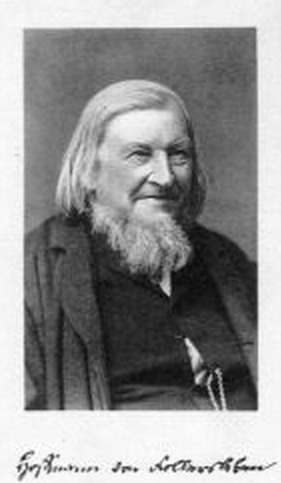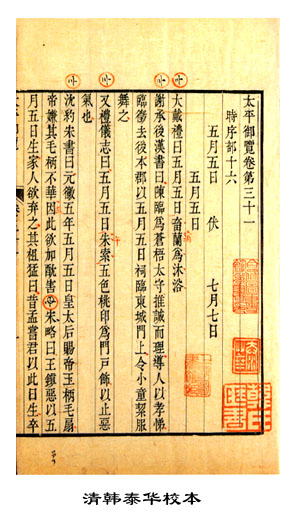|
Annotated Bibliography Of The Four Treasuries
The ''Siku Quanshu Zongmu Tiyao'' ("Annotated Catalog of the Complete Imperial Library") is an annotated catalog of the thousands of works that were considered for inclusion in the '' Siku Quanshu''. Work for the 200-chapter catalog began in 1773 and was completed in 1798. The ''Siku Zongmu'', as it is also known, is the largest pre-modern Chinese book catalog. It contains bibliographic notices on all 3,461 works that were included in the ''Siku Quanshu'', as well as shorter notes on 6,793 works that were not included in the imperial library but listed only by title (''cunmu'' 存目). Thousands of books are omitted from the catalog, including the almost 3,000 works that were destroyed by the Qing because they were considered to be anti-Manchu. The notices themselves were written by many hands, but the final drafts were edited by chief editor Ji Yun Ji Yun (; 1724–1805), also known as Ji Xiaolan () or Ji Chunfan () was a Chinese philosopher, politician, and writer. He was an ... [...More Info...] [...Related Items...] OR: [Wikipedia] [Google] [Baidu] |
Bibliography
Bibliography (from and ), as a discipline, is traditionally the academic study of books as physical, cultural objects; in this sense, it is also known as bibliology (from ). English author and bibliographer John Carter describes ''bibliography'' as a word having two senses: one, a list of books for further study or of works consulted by an author (or enumerative bibliography); the other one, applicable for collectors, is "the study of books as physical objects" and "the systematic description of books as objects" (or descriptive bibliography). Etymology The word was used by Greek writers in the first three centuries CE to mean the copying of books by hand. In the 12th century, the word started being used for "the intellectual activity of composing books." The 17th century then saw the emergence of the modern meaning, that of description of books. Currently, the field of bibliography has expanded to include studies that consider the book as a material object. Bibliography, in ... [...More Info...] [...Related Items...] OR: [Wikipedia] [Google] [Baidu] |
Qing Dynasty
The Qing dynasty ( ), officially the Great Qing,, was a Manchu-led imperial dynasty of China and the last orthodox dynasty in Chinese history. It emerged from the Later Jin dynasty founded by the Jianzhou Jurchens, a Tungusic-speaking ethnic group who unified other Jurchen tribes to form a new "Manchu" ethnic identity. The dynasty was officially proclaimed in 1636 in Manchuria (modern-day Northeast China and Outer Manchuria). It seized control of Beijing in 1644, then later expanded its rule over the whole of China proper and Taiwan, and finally expanded into Inner Asia. The dynasty lasted until 1912 when it was overthrown in the Xinhai Revolution. In orthodox Chinese historiography, the Qing dynasty was preceded by the Ming dynasty and succeeded by the Republic of China. The multiethnic Qing dynasty lasted for almost three centuries and assembled the territorial base for modern China. It was the largest imperial dynasty in the history of China and in 1790 the f ... [...More Info...] [...Related Items...] OR: [Wikipedia] [Google] [Baidu] |
Manchu
The Manchus (; ) are a Tungusic East Asian ethnic group native to Manchuria in Northeast Asia. They are an officially recognized ethnic minority in China and the people from whom Manchuria derives its name. The Later Jin (1616–1636) and Qing (1636–1912) dynasties of China were established and ruled by the Manchus, who are descended from the Jurchen people who earlier established the Jin dynasty (1115–1234) in northern China. Manchus form the largest branch of the Tungusic peoples and are distributed throughout China, forming the fourth largest ethnic group in the country. They can be found in 31 Chinese provincial regions. Among them, Liaoning has the largest population and Hebei, Heilongjiang, Jilin, Inner Mongolia and Beijing have over 100,000 Manchu residents. About half of the population live in Liaoning and one-fifth in Hebei. There are a number of Manchu autonomous counties in China, such as Xinbin, Xiuyan, Qinglong, Fengning, Yitong, Qingyuan, Weichang, ... [...More Info...] [...Related Items...] OR: [Wikipedia] [Google] [Baidu] |
Ji Yun
Ji Yun (; 1724–1805), also known as Ji Xiaolan () or Ji Chunfan () was a Chinese philosopher, politician, and writer. He was an influential scholar of Qing dynasty China and many anecdotes have been recorded about him. Ji Yun left behind a book entitled ''Notes of the Thatched Abode of Close Observations'' (閱微草堂筆記''The Shadow Book of Ji Yun'' Empress Wu Books, 2021), and another book named ''Wenda Gong Yiji'' (紀文達公遺集; Collected Works of Lord Wenda, i.e. Ji Xiaolan), which was edited by later generations. He was often mentioned with Yuan Mei as the "Nan Yuan Bei Ji" (). Background Ji Yun was born in Xian County of Hebei Province. When he was young, he was deemed intelligent. His father Ji Rongsu was a civil minister and archaeologist. Career In 1747, Ji Yun rose to intellectual prominence after winning the highest distinction in the provincial examinations. Several years later, in 1754, he attained the jinshi degree, whereupon he entered the Hanlin Aca ... [...More Info...] [...Related Items...] OR: [Wikipedia] [Google] [Baidu] |
Han Learning
Han learning (), or the Han school of classical philology, was an intellectual movement that reached its height in the middle of the Qing dynasty (1644–1912) in China. The focus of the movement was to reject neo-Confucianism in order to return to a study of the original Confucian texts. Nature and origins Han learning began with the " evidential scholarship" () movement of the late Ming dynasty, which was a reaction against the so-called "Song Learning", or Neo-Confucianism that had arisen during the Song dynasty (12th century). Neo-Confucianism had incorporated Buddhist and Daoist influences into the Confucianist tradition, introducing a new cosmology emphasising the moral nature of the cosmos. Neo-Confucianism was adopted as Confucian orthodoxy under the Song dynasty and formed the basis of the imperial examination until nearly the end of the Qing dynasty. Evidential scholars reacted to the innovations of Neo-Confucianism by turning back to the original classics, employing ph ... [...More Info...] [...Related Items...] OR: [Wikipedia] [Google] [Baidu] |
Harvard University Asia Center
The Harvard University Asia Center is an interdisciplinary research and education unit of Harvard University, established on July 1, 1997, with the goal of "driving varied programs focusing on international relations in Asia and comparative studies of Asian countries and regions (...) and supplementing other Asia-related programs and institutes and the University and providing a focal point for interaction and exchange on topics of common interest for the Harvard community and Asian intellectual, political, and business circles," according to its charter. The Asia Center facilitates the scholarly study of Asian studies by coordinating activities which are spread across the University's departments and schools, and by integrating many disciplines. Among the areas which are covered are history, culture, economics, politics, diplomacy, security, and its relationships. Thus, the main emphasis of the Asia Center rests on human and social sciences, with the principal involvement of the ... [...More Info...] [...Related Items...] OR: [Wikipedia] [Google] [Baidu] |
Harvard University
Harvard University is a private Ivy League research university in Cambridge, Massachusetts. Founded in 1636 as Harvard College and named for its first benefactor, the Puritan clergyman John Harvard, it is the oldest institution of higher learning in the United States and one of the most prestigious and highly ranked universities in the world. The university is composed of ten academic faculties plus Harvard Radcliffe Institute. The Faculty of Arts and Sciences offers study in a wide range of undergraduate and graduate academic disciplines, and other faculties offer only graduate degrees, including professional degrees. Harvard has three main campuses: the Cambridge campus centered on Harvard Yard; an adjoining campus immediately across Charles River in the Allston neighborhood of Boston; and the medical campus in Boston's Longwood Medical Area. Harvard's endowment is valued at $50.9 billion, making it the wealthiest academic institution in the world. Endowment inco ... [...More Info...] [...Related Items...] OR: [Wikipedia] [Google] [Baidu] |
1798 Non-fiction Books
Events January–June * January – Eli Whitney contracts with the U.S. federal government for 10,000 muskets, which he produces with interchangeable parts. * January 4 – Constantine Hangerli enters Bucharest, as Prince of Wallachia. * January 22 – A coup d'état is staged in the Netherlands (Batavian Republic). Unitarian Democrat Pieter Vreede ends the power of the parliament (with a conservative-moderate majority). * February 10 – The Pope is taken captive, and the Papacy is removed from power, by French General Louis-Alexandre Berthier. * February 15 – U.S. Representative Roger Griswold (Fed-CT) beats Congressman Matthew Lyon (Dem-Rep-VT) with a cane after the House declines to censure Lyon earlier spitting in Griswold's face; the House declines to discipline either man.''Harper's Encyclopaedia of United States History from 458 A. D. to 1909'', ed. by Benson John Lossing and, Woodrow Wilson (Harper & Brothers, 1910) p171 * March – th ... [...More Info...] [...Related Items...] OR: [Wikipedia] [Google] [Baidu] |
Bibliography
Bibliography (from and ), as a discipline, is traditionally the academic study of books as physical, cultural objects; in this sense, it is also known as bibliology (from ). English author and bibliographer John Carter describes ''bibliography'' as a word having two senses: one, a list of books for further study or of works consulted by an author (or enumerative bibliography); the other one, applicable for collectors, is "the study of books as physical objects" and "the systematic description of books as objects" (or descriptive bibliography). Etymology The word was used by Greek writers in the first three centuries CE to mean the copying of books by hand. In the 12th century, the word started being used for "the intellectual activity of composing books." The 17th century then saw the emergence of the modern meaning, that of description of books. Currently, the field of bibliography has expanded to include studies that consider the book as a material object. Bibliography, in ... [...More Info...] [...Related Items...] OR: [Wikipedia] [Google] [Baidu] |
Chinese Encyclopedias
Chinese encyclopedias comprise both Chinese-language encyclopedias and foreign-language ones about China or Chinese topics. There is a type of native Chinese reference work called ''leishu'' (lit. "categorized writings") that is sometimes translated as "encyclopedia", but although these collections of quotations from classic texts are expansively "encyclopedic", a ''leishu'' is more accurately described as a "compendium" or " anthology". The long history of Chinese encyclopedias began with the (222 CE) ''Huanglan'' ("Emperor's Mirror") ''leishu'' and continues with online encyclopedias such as the '' Baike Encyclopedia''. Terminology The Chinese language has several translation equivalents for the English word '' encyclopedia''. ''Diǎn'' 典 "standard; ceremony; canon; allusion; dictionary; encyclopedia" occurs in compounds such as ''zìdiǎn'' 字典 "character dictionary; lexicon", ''cídiǎn'' 辭典 "word/phrase dictionary; encyclopedia", ''dàdiǎn'' 大典 "collecti ... [...More Info...] [...Related Items...] OR: [Wikipedia] [Google] [Baidu] |





